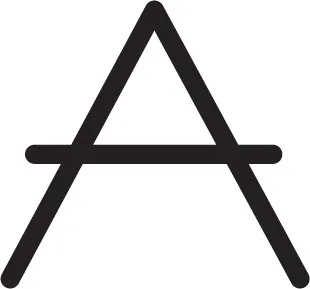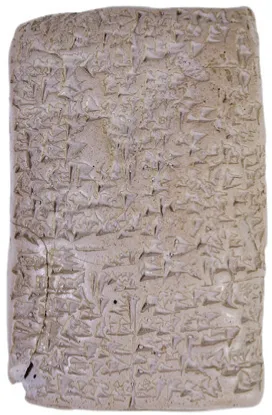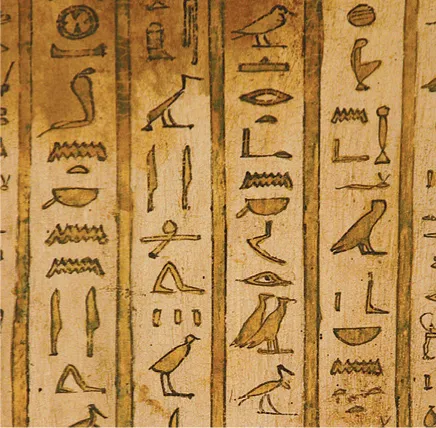
eBook - ePub
The Fundamentals of Typography
Gavin Ambrose, Paul Harris, Sallyanne Theodosiou
This is a test
Buch teilen
- 200 Seiten
- English
- ePUB (handyfreundlich)
- Über iOS und Android verfügbar
eBook - ePub
The Fundamentals of Typography
Gavin Ambrose, Paul Harris, Sallyanne Theodosiou
Angaben zum Buch
Buchvorschau
Inhaltsverzeichnis
Quellenangaben
Über dieses Buch
Demonstrating the power and variety of typography from hand-drawn to kinetic, this fully updated new edition of The Fundamentals of Typography covers the principles of using type across a range of media. Starting with a comprehensive introduction to the history of typography, the authors provide detailed explanations and inspirational examples of type usage from leading practitioners from around the world. With expanded practice exercises and four new case studies, this book gives students everything they need to know to use type effectively and creatively.
Häufig gestellte Fragen
Wie kann ich mein Abo kündigen?
Gehe einfach zum Kontobereich in den Einstellungen und klicke auf „Abo kündigen“ – ganz einfach. Nachdem du gekündigt hast, bleibt deine Mitgliedschaft für den verbleibenden Abozeitraum, den du bereits bezahlt hast, aktiv. Mehr Informationen hier.
(Wie) Kann ich Bücher herunterladen?
Derzeit stehen all unsere auf Mobilgeräte reagierenden ePub-Bücher zum Download über die App zur Verfügung. Die meisten unserer PDFs stehen ebenfalls zum Download bereit; wir arbeiten daran, auch die übrigen PDFs zum Download anzubieten, bei denen dies aktuell noch nicht möglich ist. Weitere Informationen hier.
Welcher Unterschied besteht bei den Preisen zwischen den Aboplänen?
Mit beiden Aboplänen erhältst du vollen Zugang zur Bibliothek und allen Funktionen von Perlego. Die einzigen Unterschiede bestehen im Preis und dem Abozeitraum: Mit dem Jahresabo sparst du auf 12 Monate gerechnet im Vergleich zum Monatsabo rund 30 %.
Was ist Perlego?
Wir sind ein Online-Abodienst für Lehrbücher, bei dem du für weniger als den Preis eines einzelnen Buches pro Monat Zugang zu einer ganzen Online-Bibliothek erhältst. Mit über 1 Million Büchern zu über 1.000 verschiedenen Themen haben wir bestimmt alles, was du brauchst! Weitere Informationen hier.
Unterstützt Perlego Text-zu-Sprache?
Achte auf das Symbol zum Vorlesen in deinem nächsten Buch, um zu sehen, ob du es dir auch anhören kannst. Bei diesem Tool wird dir Text laut vorgelesen, wobei der Text beim Vorlesen auch grafisch hervorgehoben wird. Du kannst das Vorlesen jederzeit anhalten, beschleunigen und verlangsamen. Weitere Informationen hier.
Ist The Fundamentals of Typography als Online-PDF/ePub verfügbar?
Ja, du hast Zugang zu The Fundamentals of Typography von Gavin Ambrose, Paul Harris, Sallyanne Theodosiou im PDF- und/oder ePub-Format sowie zu anderen beliebten Büchern aus Design & Graphic Design. Aus unserem Katalog stehen dir über 1 Million Bücher zur Verfügung.
Information
chapter 1
type and language
Typography has developed over the last 600 years as the printing process has evolved. The characters that are printed, however, have been developed over a much longer time period as language itself has developed from Egyptian hieroglyphs to the Latin letters we use today.
This chapter looks at the history of typography in relation to the development of language together with the cultural and historical changes the world has undergone. Typography is not only a craft, it is also part of a wider context. Having an understanding of this context can help to inform and enrich typographic practice.
Type and language
Type is the means by which an idea is written and given visual form. Many typefaces in use today are based upon designs created in earlier historical epochs, and the characters themselves have a lineage that extends back thousands of years to the first mark-making by primitive man, when characters were devised to represent objects or concepts.
This section is an introduction to the complex origins of type. An appreciation of typography naturally involves understanding how written language developed. A general timeline is presented here, but it is important to remember that there is overlap across epochs and for many major developments, there exist counter-claims to the invention. What is shown here serves as a guide to the major milestones in typography.
This section aims to be as comprehensive as possible, but it is impossible to be conclusive. One of the wonders of typography is this fluidity, its ability to adapt to circumstances, technological advances and cultural shifts. For simplicity, this section has been divided into the following categories: The Alphabet, Early Printing, 1800s, Arts and Crafts Movement, The Early Twentieth Century, 1950s, 1960s, 1970s, 1980s, 1990s and Graphic Design Since 2000.
Language is not static
Letters, language and indeed typography develop and change over time as the dominant power inherits, alters, adapts and imposes its will on existing forms. The modern Latin alphabet is a result of such ongoing transition, having been developed and adapted over several millennia.
For example, the modern letter ‘A’ was originally a pictogram representing an ox’s head, but as the Phoenicians wrote from right to left, the symbol was turned on its side. Under the Greeks, who wrote from left to right, it was turned again and finally, the Romans turned the character full-circle, giving it the form that we recognize today.
 |  |
| A pictogram of an ox’s head… | …has been turned on its side by the Phoenicians… |
 |  |
| ...rotated by the Greeks… | …and turned upright by the Romans, to form the modern ‘A’. |
THE ALPHABET
| Latin | Arabic |
 |  |
| Chinese | Greek boustrophedon |
 |  |
Reading direction
The direction in which text is read varies from language to language and is determined in part by historical factors such as how text used to be written. For example, Chinese calligraphers use paint brushes to draw ideograms and so it is easier to write down the page with the right hand, while controlling the scroll with the left.
Cuneiform tablets
Cuneiform uses a wedge-shaped stylus to make impressions into a wet clay tablet and is one of the earliest standardized writing systems. It was developed in ancient Mesopotamia, the region that is now east of the Mediterranean, from about 4,000 BC until about 100 BC. Early forms of cuneiform were written in columns from top to bottom, but later changed to be written in rows from left to right. With this change the cuneiform signs were turned on their sides. Cuneiform began to die out as other language systems such as Aramaic spread through the region in the seventh and sixth centuries BC, and as the use of Phoenician script increased.

Some terms to be familiar with
There are many terms used within this book that you’ll need to be familiar with, many of which are often confused.
PHONOGRAM
A written symbol, letter, character or other mark that represents a sound, syllable, morpheme or word.
IDEOGRAM
A graphic element that represents an idea or a concept.
ICON
A graphic element that represents an object, person or something else.
SYMBOL
A graphic element that communicates the ideas and concepts that it represents rather than denoting what it actually is.
PICTOGRAM
A graphic element that describes an action or series of actions through visual references or clues.
Hieroglyphs
Hieroglyphs use a pictogrammatic writing system and were used by several cultures including the Ancient Egyptians and Incas. Each pictogram represents an object rather than a vocal sound. There are over 750 individual Egyptian pictograms. Hieroglyphs can be written from right to left, left to right, or downwards. This is indicated in each piece of text by the direction in which the objects face. For example, if they are facing to the left, the inscription is read from left to right. Border lines are used to indicate that text should be read from top to bottom.

Hieroglyphs on papyrus, reading downwards, as i...